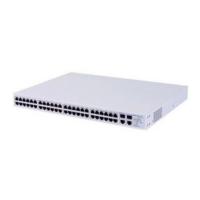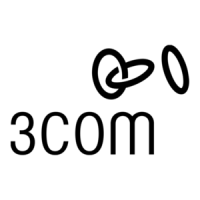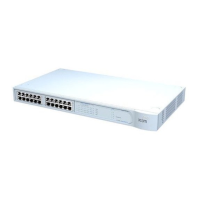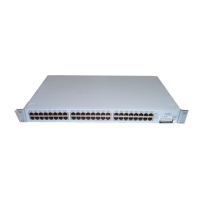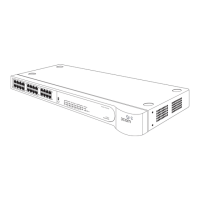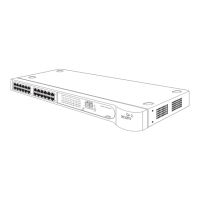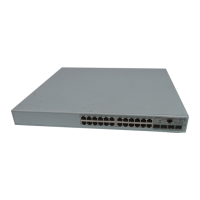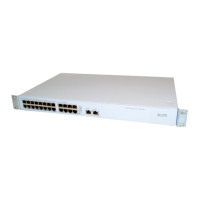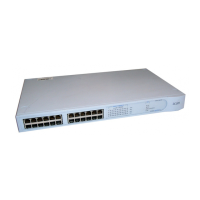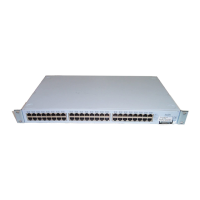12 CHAPTER 1: INTRODUCING THE SUPERSTACK 3 SWITCH 3226 AND SWITCH 3250
About the Switch The Switch is a 10/100 Mbps Ethernet Switch, which consists of either:
■ 24 10BASE-T/100BASE-TX ports or
■ 48 10BASE-T/100BASE-TX ports
and:
■ Two 10BASE-T/100BASE-TX/1000BASE-T (10/100/1000) ports
■ Two SFP ports
The two 10/100/1000 ports are combination ports. When an SFP module
is inserted it has priority over the 10/100/1000 port of the same number
(25-26 on the Switch 3226, 49-50 on the Switch 3250). The
corresponding 10/100/1000 port is disabled when an SFP module is
present.
Summary of
Hardware Features
Table 3 summarizes the hardware features that are supported by the
Switch.
Table 3 Hardware features
Feature Switch
MAC Addresses ■ Up to 8000 supported
■ Up to 200 static entries
Auto-negotiation Supported on all ports
Auto MDI/MDI-X Supported on all ports
Forwarding Modes Store and Forward
Duplex Modes Half and full duplex on all ports
Traffic Prioritization Supported (using the IEEE Std 802.ID, 1998 Edition):
4 queues per port
Ethernet/Fast Ethernet
Ports
Auto-negotiating 10BASE-T / 100BASE-TX ports
Ethernet/Fast Ethernet/
Gigabit Ethernet Ports
Auto-negotiating 10BASE-T / 100BASE-TX /
1000BASE-T ports
RPS Support Connects to SuperStack 3 Advanced Redundant
Power System (ARPS) (3C16071B) with Type 3
Module (3C16075)
SFP Ports 2 auto-negotiating SFP ports
Mounting 19-inch rack or stand-alone mounting
DUA1750-0AAA01.book Page 12 Friday, December 5, 2003 10:24 AM
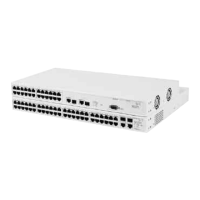
